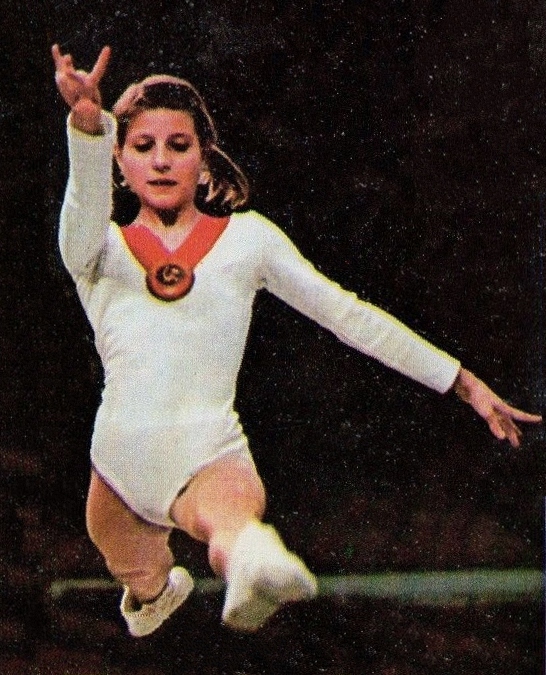Olga Korbut: The Sparrow from Minsk
Olga Korbut, affectionately known as the “Sparrow from Minsk,” revolutionized the sport of gymnastics with her daring routines and captivating personality. Her performances at the 1972 Munich Olympics not only earned her a place in the pantheon of gymnastics legends but also transformed the sport, inspiring generations of gymnasts to come. This article delves into Korbut’s remarkable career, her impact on gymnastics, and her enduring legacy.
Early Life and Rise to Prominence
Olga Valentinovna Korbut was born on May 16, 1955, in Grodno, Belarus, which was then part of the Soviet Union. Growing up in a modest family, Korbut showed an early interest in gymnastics. Her talent was evident from a young age, and she was soon accepted into a sports school in Grodno, where she trained under the guidance of Renald Knysh.
Korbut’s early years were marked by a fierce determination and an extraordinary work ethic. She quickly mastered the basics and began developing her own unique style, characterized by bold, innovative moves. By the time she was 15, Korbut had established herself as one of the top gymnasts in the Soviet Union.
The 1972 Munich Olympics
Korbut’s breakthrough came at the 1972 Munich Olympics, where her performances captivated the world and redefined women’s gymnastics. At just 17 years old, she introduced a level of athleticism and showmanship that had never been seen before.
One of the most iconic moments of the Munich Games was Korbut’s routine on the uneven bars. She performed the “Korbut Flip,” a daring backward somersault that had never been attempted in competition. The move left the audience and judges in awe, and although she faltered slightly during the finals, her innovative performance secured her a place in gymnastics history.
Korbut’s performances on the balance beam and floor exercise were equally groundbreaking. On the beam, her combination of acrobatics and ballet-like grace earned her a gold medal. Her floor routine, set to lively music, showcased her personality and technical skill, winning her another gold medal. Korbut’s emotional connection with the audience and her expressive routines set a new standard for the sport.
In the team competition, Korbut was instrumental in leading the Soviet Union to a gold medal. Her consistent performances across all apparatuses demonstrated her versatility and contributed significantly to the team’s success.
Post-Olympic Career and the 1976 Montreal Olympics
Following her triumph in Munich, Korbut became an international sensation. She continued to compete at the highest level, further honing her skills and adding new elements to her routines. At the 1974 World Championships, she won gold medals in the team competition and the balance beam, solidifying her status as one of the world’s top gymnasts.
However, by the time of the 1976 Montreal Olympics, Korbut faced stiff competition from her teammate, Nadia Comăneci of Romania. While Korbut performed admirably, winning a silver medal in the team competition and a bronze in the balance beam, it was Comăneci who stole the spotlight with her perfect scores.

Despite not replicating her 1972 success, Korbut’s performances in Montreal were still highly regarded, and she remained a beloved figure in the gymnastics community.
Retirement and Later Life
After the 1976 Olympics, Korbut retired from competitive gymnastics. She moved to the United States in the 1990s, where she continued to contribute to the sport as a coach and motivational speaker. Korbut’s post-retirement years were marked by personal challenges, including a difficult marriage and financial struggles, but she persevered and remained an influential figure in the gymnastics world.
Impact and Legacy
Olga Korbut’s impact on gymnastics is profound and multifaceted. Her daring routines and innovative moves, such as the Korbut Flip, pushed the boundaries of what was considered possible in women’s gymnastics. She inspired a new generation of gymnasts to take risks and incorporate more acrobatic elements into their routines.
Revolutionizing Gymnastics
Before Korbut, women’s gymnastics was often characterized by a more conservative, balletic style. Korbut’s dynamic performances introduced a new level of athleticism and excitement to the sport. Her ability to combine difficult acrobatics with expressive choreography helped redefine the standards of competitive gymnastics.
Cultural Icon
Korbut’s charisma and engaging personality made her a cultural icon. She brought gymnastics into the mainstream, attracting a broader audience and increasing the sport’s popularity worldwide. Her emotional performances and genuine expressions of joy and disappointment resonated with fans, making her one of the most beloved athletes of her time.
Influence on Future Generations
Korbut’s influence is evident in the careers of many gymnasts who followed her. Athletes like Nadia Comăneci, Mary Lou Retton, and Simone Biles have all cited Korbut as an inspiration. Her legacy is not just in the moves she pioneered but in the fearless spirit and passion she brought to gymnastics.
Olga Korbut’s career is a testament to the transformative power of sports. She not only achieved incredible success as a gymnast but also redefined the possibilities within her sport. Her innovative routines, charismatic presence, and indomitable spirit continue to inspire athletes and fans alike. The “Sparrow from Minsk” flew high in the world of gymnastics, leaving a legacy that will be remembered for generations to come.















